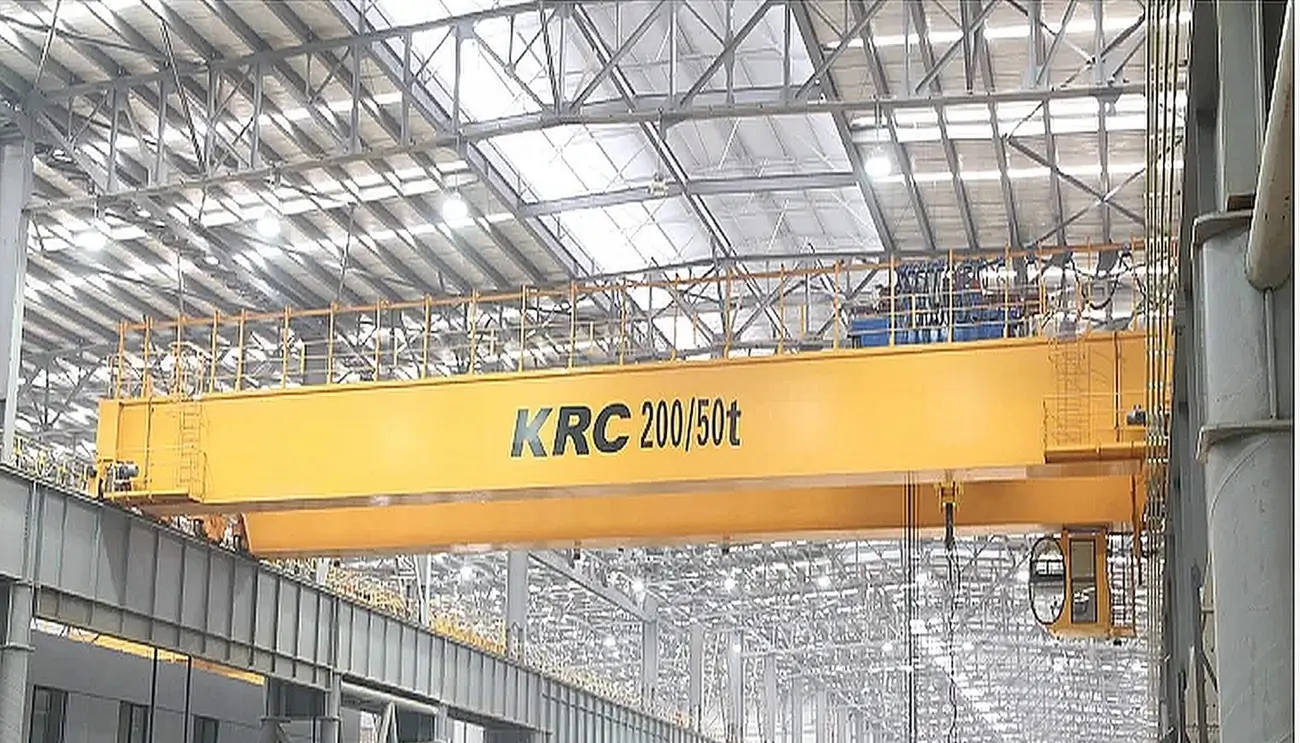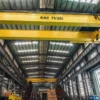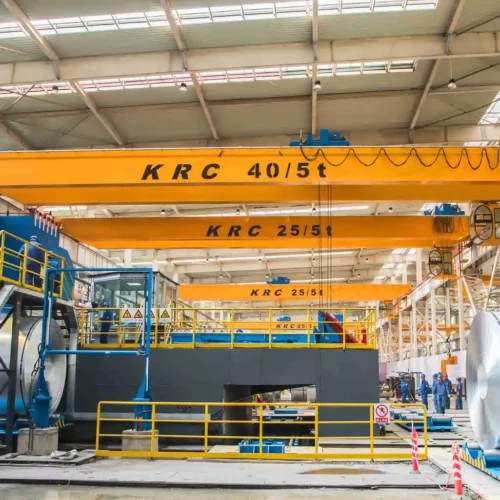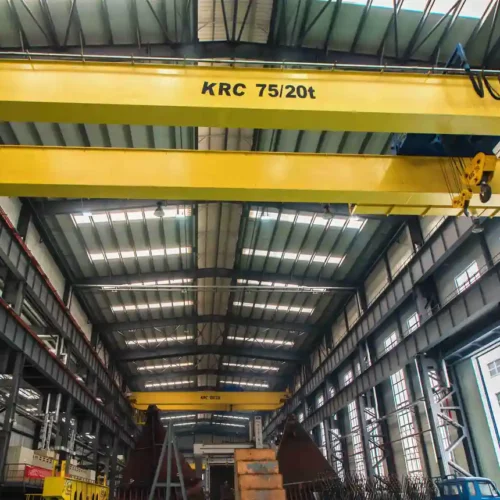50 ton gantry crane Safety Certifications
Safety certifications for a 50-ton gantry crane are crucial to ensure operational safety and compliance with industry standards. Here are the primary certifications and standards to consider:
1. OSHA (Occupational Safety and Health Administration): In the United States, compliance with OSHA standards is mandatory. OSHA regulations, particularly 29 CFR 1910.179, establish requirements for overhead and gantry cranes, encompassing design, inspection, and maintenance.
2. ASME (American Society of Mechanical Engineers): ASME B30.2 provides safety standards for overhead and gantry cranes. It outlines guidelines concerning the construction, installation, operation, inspection, testing, and maintenance.
3. ANSI (American National Standards Institute): ANSI B30 series standards also offer specifications for gantry cranes, complementing ASME’s principles and enhancing safety guidelines.
4. FEM (Fédération Européenne de la Manutention): For European countries, the FEM standards provide regulations similar to the ASME, focusing on the design, engineering, and safety of lifting equipment.
5. ISO (International Organization for Standardization): ISO 9927 covers the general inspection requirements of cranes, while ISO 4306 provides the terminology. ISO standards help ensure global consistency in crane safety and design.
6. CE Marking: In Europe, the CE mark is mandatory, indicating conformity with health, safety, and environmental protection standards. It signifies that the crane meets the essential requirements of the EU machinery directives.
7. Local and National Regulations: Many countries have local safety standards and certifications. For example, in Canada, the CSA (Canadian Standards Association) provides guidelines similar to OSHA and ASME.
Certification processes involve rigorous testing, inspection, and verification by authorized bodies to ensure compliance. Regular audits and maintenance checks are also necessary to maintain these certifications and ensure ongoing safety.
List Reference Technical Parameters of “50 ton gantry crane”
A 50-ton gantry crane is a heavy-duty lifting machine used primarily in industrial settings like shipyards, construction sites, and manufacturing facilities. Here are the reference technical parameters commonly associated with a 50-ton gantry crane:
1. Load Capacity: 50 tons (50,000 kg).
2. Span Length: Typically ranges from 10 to 35 meters.
3. Lifting Height: Generally, between 6 to 18 meters.
4. Crane Speed (Traveling Speed): 20 to 45 meters per minute.
5. Hoisting Speed: Normally 1 to 10 meters per minute, depending on the application.
6. Power Supply: Usually requires a three-phase power supply, commonly around 380V/50Hz or 400V/50Hz.
7. Control System: Equipped with options such as cabin control, remote control, or pendent control.
8. Work Duty: Classified by standards such as FEM, ISO, or CMAA which determine the crane’s operational workload; commonly A5-A7 or M5-M7.
9. Motor Type: Generally, squirrel cage motors are used, often with variable frequency drives (VFD) for speed control.
10. Material: Steel construction, often with a combination of structural steel and high-strength steel parts.
11. Safety Features: Includes overload protection devices, emergency stop functions, end limit switches, rail clamps, and anti-collision systems.
12. Drive System: Gearbox with high efficiency, dynamic braking systems, and often features for skew and sway control.
13. Operational Environment: Can be used indoors or outdoors, with provisions for weather protection and anti-corrosion coatings for outdoor use.
14. Installation and Maintenance: Modular design for easier assembly and disassembly, and accessible components for routine maintenance.
These parameters provide a comprehensive view of a 50-ton gantry crane’s capabilities and are crucial for selecting the right crane for specific operational needs.
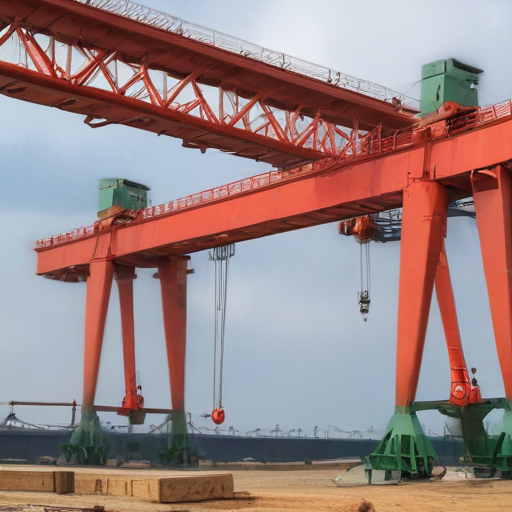
List Product features of “50 ton gantry crane”
A 50-ton gantry crane is a robust lifting solution utilized in a variety of industries for heavy-duty lifting and material handling tasks. Here are its key features:
1. High Load Capacity: The crane can lift and move loads up to 50 tons, making it suitable for heavy-duty applications.
2. Versatile Usage: Ideal for applications in shipyards, construction sites, warehouses, and manufacturing plants.
3. Adjustable Span: The beam span can be adjusted to accommodate different operational needs and spaces.
4. Durability: Constructed from high-strength steel, ensuring longevity and resistance to wear and tear.
5. Power Options: Available with electric or manual operation for lifting, ensuring flexibility in various environments.
6. Height Reach: Offers adjustable lifting heights to cater to specific operational requirements.
7. Mobility: Can be equipped with wheels for easy movement on ground rails or tracks, or static mounts for fixed locations.
8. Safety Features: Includes emergency stop functions, overload protection, and limit switches for safe operation.
9. Precision Control: Often fitted with variable speed controls and advanced hoisting mechanisms for precise handling.
10. Customizable: Can be tailored with additional features like remote controls, anti-sway systems, or specialized hooks.
11. Ease of Maintenance: Designed for straightforward maintenance with easy access to vital components.
12. Environmental Resilience: Built to withstand harsh environmental conditions, including extreme temperatures, corrosion, and heavy wind loads.
By integrating these features, a 50-ton gantry crane ensures reliable, efficient, and safe material handling for demanding industrial applications.
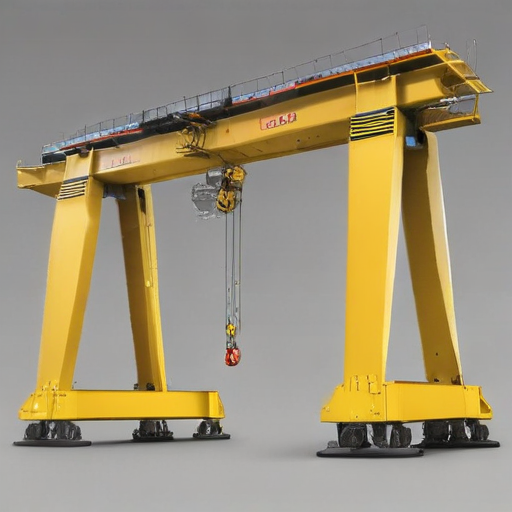
List Application of “50 ton gantry crane”
A 50-ton gantry crane, characterized by its substantial lifting capacity and versatility, is instrumental in various industries. Its applications span across multiple sectors, highlighted by the following:
1. Construction Industry: Utilized for lifting and moving building materials such as steel beams, concrete blocks, and large equipment. Its ability to operate on-site with mobility makes it ideal for constructing large structures and infrastructure projects.
2. Shipping and Ports: Essential in loading and unloading heavy containers and cargo from ships. Its expansive reach and lifting capability streamline operations in shipyards, reducing loading times and enhancing efficiency.
3. Manufacturing: Facilitates the handling of heavy machinery and raw materials. In automotive, aerospace, and heavy equipment manufacturing, it ensures the precise placement of components, improving safety and assembly line productivity.
4. Mining: Handles large equipment, ores, and materials, assisting in both development and operational phases. It is vital for moving heavy loads in and out of mining sites, contributing to the effectiveness and safety of mining operations.
5. Warehousing and Logistics: Enables the lifting and precise placement of heavy goods and materials in storage facilities. Its integration improves storage density and inventory management, fostering efficiency in supply chain operations.
6. Railway Operations: Used for lifting and positioning heavy rail tracks, engines, and carriages. It is crucial for the maintenance, repair, and assembly of railway infrastructure, enhancing the operational efficiency of rail systems.
7. Power Plants: Assists in the installation and maintenance of large turbines, generators, and other heavy components. Its precision and lifting power are integral to both nuclear and conventional power plant operations.
8. Wind Energy: Facilitates the construction and maintenance of wind turbines. The crane’s ability to maneuver heavy nacelles, blades, and towers is vital for the assembly and upkeep of wind farms.
In essence, the 50-ton gantry crane is a cornerstone in industries requiring the movement of heavy loads, providing versatility, efficiency, and safety in handling substantial materials and equipment.
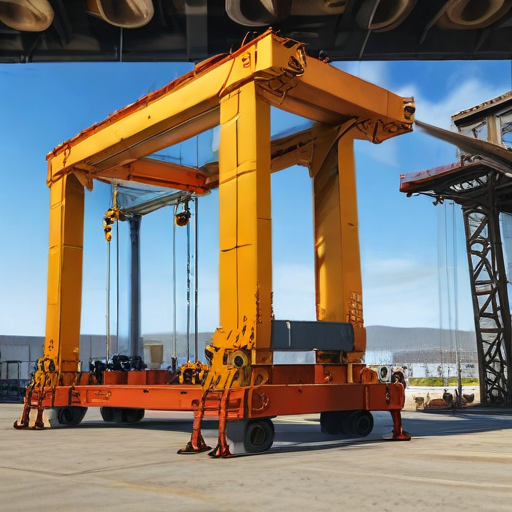
List Various Types of “50 ton gantry crane”
A 50-ton gantry crane comes in various designs tailored to different applications and environments. Below are some common types:
1. Single Girder Gantry Crane: Features one main horizontal beam (girder) and suitable for lighter operations. It’s usually more cost-effective and easier to install.
2. Double Girder Gantry Crane: Incorporates two horizontal girders, offering greater stability and lifting capacity. This type is often used in heavy-duty applications and can handle more frequent usage.
3. Rail-Mounted Gantry Crane (RMG): Moves along a fixed rail system, typically employed in container yards, warehouses, and shipyards. Ideal for long distance travel within a defined path.
4. Rubber-Tired Gantry Crane (RTG): Equipped with rubber tires for flexibility in movement. Commonly used in container terminals to transfer cargo effectively.
5. Full Gantry Crane: The structure spans the entire work area, with supports that travel on rails located on the ground. Ideal for large-scale construction and shipbuilding projects.
6. Semi-Gantry Crane: One side is supported on the ground, while the other side is supported by an elevated runway, saving floor space and familiar in workshops and manufacturing plants.
7. Portable Gantry Crane: Smaller and can be relocated easily. They are less common for 50-ton capacities but available for specific scenarios requiring mobility within a work site.
8. Truss Gantry Crane: Utilizes a truss structure for the lifting mechanism, providing resistance to high winds. Suitable for outdoor applications.
Each type addresses unique requirements, from maneuverability and installation constraints to load handling and environmental conditions. Selecting the right 50-ton gantry crane depends on operational needs, site conditions, and specific job requirements.
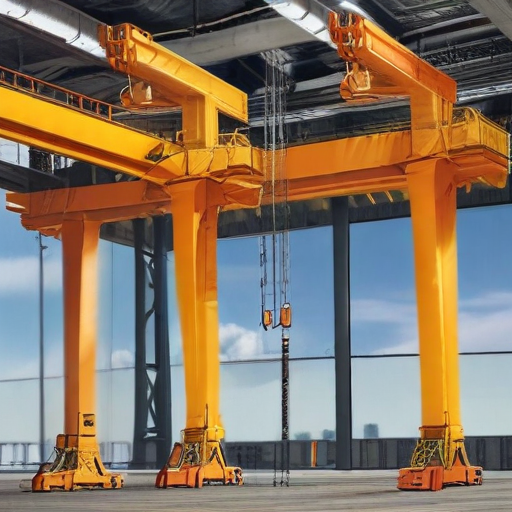
50 ton gantry crane Accessories Upgrades and Custom Manufacturing Options
When it comes to upgrading and customizing a 50-ton gantry crane, there are several accessories and manufacturing options to consider to enhance functionality, safety, and efficiency.
Accessories:
1. Remote Controls:
– Wireless or wired remote control systems for ease of operation.
2. Anti-Sway Systems:
– Technologies that minimize load swinging to improve safety and precision.
3. Load Indicators:
– Advanced load monitoring systems to display real-time weight data, ensuring safe lifting.
4. LED Lighting:
– High-efficiency LED lights for improved visibility during low-light operations.
5. Weatherproofing:
– Coatings and seals to protect electrical and mechanical parts from harsh environments.
6. Spreader Beams:
– Custom-designed beams for handling long or bulky loads.
7. Emergency Stop Mechanisms:
– Additional, easily accessible emergency stop buttons for enhanced safety.
8. Cabling and Ropes:
– Upgraded, heavy-duty cables and ropes designed for higher durability and reduced maintenance.
Upgrades:
1. Motor and Drive Upgrades:
– High-efficiency motors and advanced drives for better performance and energy savings.
2. Automation:
– Integration of automated systems, including laser rangefinders and GPS, for improved positioning and operation.
3. Variable Speed Control:
– VFD (Variable Frequency Drive) systems to offer precise control over lifting and traveling speeds.
4. Enhanced Control Systems:
– PLC-based control systems with user-friendly interfaces for easier operation and diagnostics.
Custom Manufacturing Options:
1. Tailored Dimensions:
– Customizing the width, height, and span to fit specific space constraints or workflows.
2. Material Handling Attachments:
– Custom hooks, magnets, or clamps designed for specific types of loads.
3. Dual Trolley Systems:
– For handling heavier or more complex loads by distributing the weight.
4. Track Customization:
– Custom rail tracks adapted to your facility’s floor plan.
5. Portability Enhancements:
– Options like rubber wheels or rail-mounted systems for better maneuverability.
By investing in these accessories, upgrades, and custom manufacturing options, a 50-ton gantry crane can be significantly enhanced to meet specific operational needs and improve overall efficiency and safety.
List Quality Control and The Manufacturing Process of “50 ton gantry crane”
Quality Control of 50 Ton Gantry Crane
1. Material Inspection: Evaluate raw materials for compliance with industry standards. This includes checking the steel for durability, and resistance to wear and corrosion.
2. Welding Inspections: Conduct radiographic or ultrasonic tests to ensure weld quality and structural integrity.
3. Dimensional Accuracy: Use precision measurement tools to check components against design specifications.
4. Load Testing: Perform static and dynamic load tests to verify load-bearing capability and stability at 50 tons.
5. Electrical Systems Check: Inspect wiring, control panels, and safety circuits to ensure operational reliability and compliance with safety standards.
6. Paint and Coating: Evaluate surface treatment for rust resistance and adherence to environmental regulations.
7. Final Inspection: Comprehensive review covering mechanical, electrical, and operational aspects. Verify all safety features and fail-safes.
8. Documentation: Maintain a thorough record of inspections, tests, and certifications for traceability.
Manufacturing Process of 50 Ton Gantry Crane
1. Design and Engineering: Specialized engineers create detailed plans and simulations using CAD software to ensure optimal performance and safety.
2. Material Procurement: Acquire high-strength steel and other components from certified suppliers to ensure quality and conformity to specifications.
3. Cutting and Shaping: Use CNC machines for precise cutting and shaping of steel components to ensure accuracy and fit.
4. Welding and Assembly: Skilled welders join the steel structures as per design specifications followed by the assembly of the gantry frame and critical components.
5. Machining: Perform milling, drilling, and other machining processes to prepare parts for assembly, ensuring accuracy and tolerance.
6. Surface Treatment: Apply anti-corrosive paints or coatings to protect against environmental deterioration.
7. Electrical Assembly: Install and configure electrical systems including motors, drives, and control panels.
8. Pre-assembly Test: Conduct initial tests for mechanical and electrical systems before full assembly.
9. Final Assembly: Integrate all sub-assemblies into the main frame, including hoisting mechanisms and safety systems.
10. Final Testing: Perform exhaustive load tests and functional trials to ensure the crane meets all specified requirements.
11. Packaging and Shipping: Pack the crane securely with all necessary documentation for transport to the customer site.
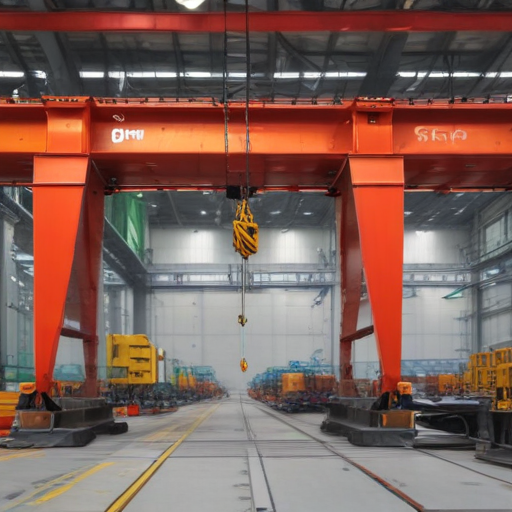
How to use “50 ton gantry crane”
Operating a 50-ton gantry crane safely and effectively involves several key steps. Here’s a concise guide:
1. Pre-Operation Inspection:
– Check the crane and hoist: Inspect for any visible damage or wear.
– Inspect the working area: Ensure it’s clear of obstacles and unauthorized personnel.
– Verify commands and signals: Establish hand signals or communication methods with the team.
2. Preparation:
– Secure the load: Attach the lifting gear (hooks, slings) ensuring it’s rated for the load.
– Distribute weight evenly: Make sure the load is perfectly balanced.
– Check controls: Test the crane’s controls to ensure proper functioning.
3. Lifting Operation:
– Lift smoothly: Start lifting gradually to prevent swings or jerks.
– Maintain visibility: Ensure the load is always visible, and use spotters if necessary.
– Control the speed: Avoid sudden movements to maintain stability.
4. Transportation:
– Move slowly: Transport the load at a controlled pace.
– Clear path: Ensure the travel path is free from obstacles and personnel.
– Monitor constantly: Keep an eye on both the load and surroundings.
5. Lowering the Load:
– Lower steadily: Place the load down smoothly and slowly.
– Confirm placement: Ensure the load is securely positioned before detaching.
6. Post-Operation:
– Inspect the crane: Check for any wear or damage caused during operation.
– Secure the crane: Park it in the designated area and power it down safely.
– Report issues: Document any problems or irregularities.
Safety Tips:
– Training: Operators must be trained and certified.
– Communication: Maintain clear communication with all team members.
– Emergency procedures: Be aware of emergency stop functions and procedures.
Following these guidelines helps ensure the safe and efficient use of a 50-ton gantry crane.
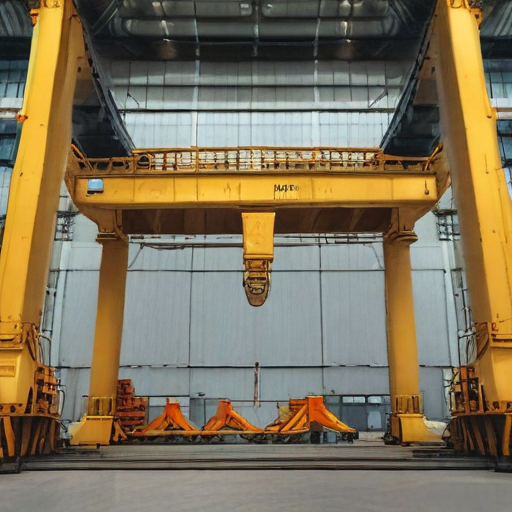
“50 ton gantry crane” Comparative Analysis
A 50-ton gantry crane is a robust piece of material handling equipment commonly used in various industries such as shipping, construction, and manufacturing. The primary purpose of such a crane is to lift and move heavy loads efficiently and safely within a designated area. Here’s a brief comparative analysis of different types of 50-ton gantry cranes:
Full Gantry Cranes
– Structure: Full gantry cranes typically feature two legs that ride on rails embedded in the ground, spanning a wide area.
– Advantages: Ideal for outdoor applications, they offer a larger lifting area and higher stability for very heavy loads.
– Disadvantages: Large footprint and usually more expensive due to the extensive rail system required.
Semi-Gantry Cranes
– Structure: Semi-gantry cranes have one leg that rides on a runway system while the other end is supported by a building or structure.
– Advantages: Suitable for indoor and outdoor applications, these cranes save space and can be easier to install.
– Disadvantages: Limited mobility compared to full gantry cranes and may require additional structural support.
Portable Gantry Cranes
– Structure: Portable gantry cranes are typically smaller and designed for easy relocation, often fitted with wheels or track systems.
– Advantages: High flexibility, cost-effective, and can be moved across different work sites easily.
– Disadvantages: Lower lifting capacity range and less stability in handling high-capacity loads.
Rubber-Tired Gantry Cranes
– Structure: These cranes have rubber tires instead of rails, making them mobile over a wide area.
– Advantages: Excellent for specific outdoor applications like port operations, offering high mobility with heavy load capabilities.
– Disadvantages: Higher operational costs due to maintenance of tires and complicated maneuvering requirements.
Conclusion
The choice of a 50-ton gantry crane depends on specific operational requirements like the application area, mobility needs, and budget. Full gantry cranes are best for heavy, outdoor applications, while semi-gantry and portable versions cater to flexibility and indoor spaces. Rubber-tired gantry cranes excel in highly mobile outdoor environments but come with higher operational costs. Choose based on the specific needs of your project for optimal functionality.
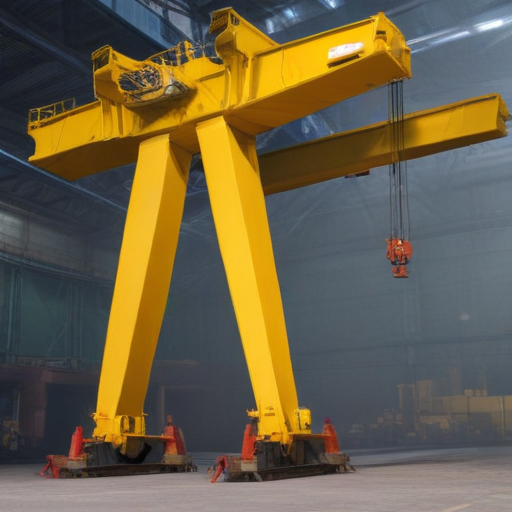
“50 ton gantry crane” Warranty and Support
Warranty and Support for 50 Ton Gantry Crane
When investing in a 50-ton gantry crane, it’s crucial to understand the warranty and support options available to ensure long-term operational efficiency and reliability.
Warranty: Most reputable manufacturers offer a comprehensive warranty that typically lasts between one to two years from the date of shipment or installation, whichever is sooner. This warranty usually covers defects in materials and workmanship under normal use and service conditions. Specific components like motors, electrical systems, and structural elements often have individual warranty terms. It’s advisable to thoroughly read the warranty document to understand the coverage and any exclusions.
Support: Quality after-sales support serves to optimize the crane’s operational lifespan and performance. Manufacturers often provide several levels of support services, including:
1. 24/7 Technical Assistance: Access to expert technicians via phone or email to troubleshoot problems remotely.
2. On-Site Service: Trained professionals can be dispatched to your site for maintenance, repair, and inspections, ensuring minimal downtime.
3. Spare Parts Availability: A guaranteed inventory of essential components helps in quick replacements and repairs.
4. Maintenance Programs: Scheduled maintenance services to conduct routine checks, thereby preventing unexpected failures.
5. Training: Operators and maintenance personnel are often given detailed training on the correct usage and upkeep of the crane to ensure safety and proficiency.
It’s vital to partner with a supplier who not only provides a robust warranty but also excels in after-sales service. Opt for a manufacturer with a credible reputation and a proven track record of customer satisfaction. By ensuring that the warranty and support provisions are clearly understood and adhered to, you can maximize your gantry crane’s performance and longevity.
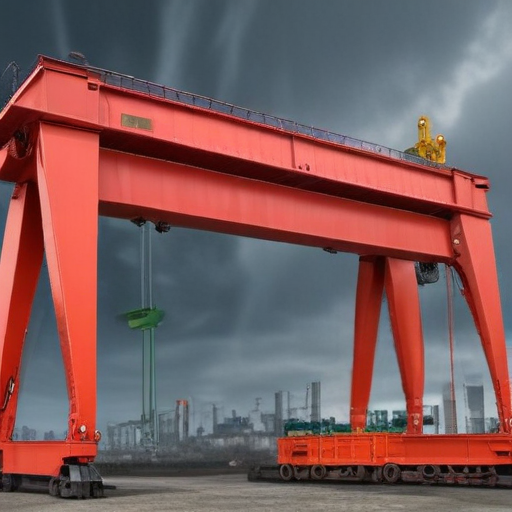
List “50 ton gantry crane” FAQ
Sure, here are some frequently asked questions (FAQs) about 50-ton gantry cranes.
1. What is a 50-ton gantry crane?
– A 50-ton gantry crane is a robust lifting device used for handling heavy loads up to 50 tons. It consists of a bridge supported by two A-frame steel legs, often used in industrial environments.
2. What are the main uses of a 50-ton gantry crane?
– These cranes are primarily used in construction sites, shipyards, workshops, and warehouses for lifting heavy machinery, containers, and construction materials.
3. What are the power requirements?
– Power requirements depend on the motor specifications but generally require a three-phase power supply. Always consult the manufacturer’s guidelines.
4. How is it assembled and disassembled?
– Assembly involves constructing the frame, attaching the bridge, installing the hoist, and connecting the electrics. Disassembly is the reverse. Professional assistance is recommended for safety.
5. What kinds of safety features should it have?
– Overload protection, emergency stop buttons, limit switches, audible alarms, and regular maintenance schedules are critical for safety.
6. Can it be operated indoors and outdoors?
– Yes, it can be used in both environments, but outdoor use requires weather-resistant features.
7. Are there different types of 50-ton gantry cranes?
– Yes, there are single girder and double girder designs, adjustable height cranes, and portable or semi-gantry variations.
8. What is the typical span range?
– The span usually ranges from 18 to 35 meters but can be customized based on the application.
9. How is it controlled?
– Operation is typically through a pendant control, remote control, or a cab control system.
10. What kind of maintenance does it require?
– Regular inspections, lubrication of moving parts, checking cables and electrical systems, and adherence to manufacturer-recommended maintenance schedules ensure longevity and safety.
By addressing these common questions, prospective users can better understand the specifications, uses, and maintenance requirements of a 50-ton gantry crane.
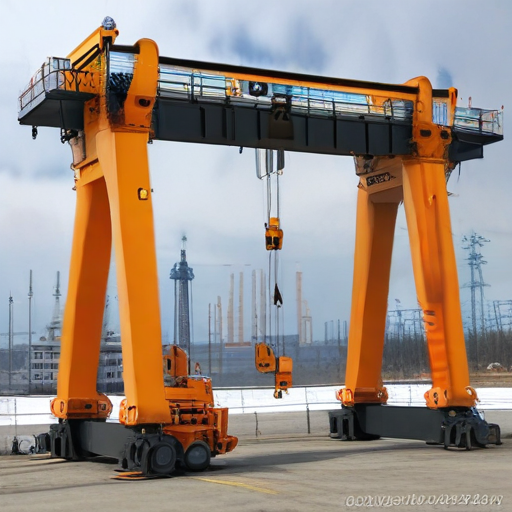
Top 10 FAQ with answer about 50 ton gantry crane for Buyer Sourcing from China
Sure! Here are the top 10 frequently asked questions (FAQs) about sourcing a 50-ton gantry crane from China, along with concise answers:
1. What is the lead time for a 50-ton gantry crane?
– The lead time typically ranges from 30 to 60 days depending on the manufacturer’s production schedule and customization requirements.
2. What certifications should a 50-ton gantry crane from China have?
– Ensure the crane has ISO, CE, and possibly SGS certification, along with adherence to Chinese manufacturing and safety standards.
3. What factors affect the cost of a 50-ton gantry crane?
– The cost is influenced by the crane’s specifications, additional features like remote control or anti-sway technology, material quality, and delivery logistics.
4. Can the gantry crane be customized?
– Yes, Chinese manufacturers often offer customization options to meet specific operational requirements, such as span length, lifting height, and power sources.
5. How do I ensure the quality of a 50-ton gantry crane from China?
– Conduct thorough vetting, request references, review past projects, and consider third-party inspection services during manufacture and before delivery.
6. What are the payment terms for purchasing a gantry crane from China?
– Common terms include 30% advance payment and the remaining 70% against shipping documents. However, these can vary and should be negotiated.
7. What type of after-sales service is available?
– Reputable manufacturers provide comprehensive after-sales services, including installation, commissioning, training, and a warranty period (typically 1 year).
8. How to handle shipping and logistics for a 50-ton gantry crane?
– Most manufacturers can assist with shipping arrangements, but it’s prudent to engage a reliable freight forwarder to handle logistics and customs clearance.
9. Can I visit the manufacturer in China before making a purchase?
– Yes, factory visits are encouraged to assess the manufacturer’s capabilities, quality management, and to finalize technical details.
10. What are the key features to look for in a 50-ton gantry crane?
– Key features include robust construction, reliable hoisting mechanisms, safety devices, easy maintenance, and compliance with international standards.
These concise answers aim to provide a quick yet comprehensive overview for buyers interested in sourcing a 50-ton gantry crane from China.

